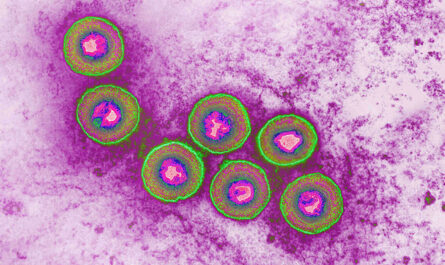A recent study conducted by scientists at the Salk Institute has unveiled a groundbreaking method for interrupting sperm production, presenting a potential new target for reversible and non-hormonal male birth control. The findings, published in Proceedings of the National Academy of Sciences, highlight a new protein complex that plays a crucial role in regulating gene expression during sperm production.
Traditional male contraceptive options in the United States, such as condoms or vasectomies, often fall short in terms of reliability and convenience. While previous attempts to develop male birth control drugs have faced challenges like incomplete protection or severe side effects, the need for innovative approaches in this field remains significant.
The research team at the Salk Institute focused on a protein complex involved in the process of sperm development and identified a new approach to disrupt this mechanism using a class of drugs known as HDAC inhibitors. By targeting this protein complex, the researchers were able to effectively block fertility in male mice without impacting their libido.
Senior author Ronald Evans, a professor and director at the Gene Expression Laboratory at Salk, emphasized the unique subtlety of their approach compared to traditional methods. While many experimental male birth control drugs take a more blunt approach to inhibiting sperm production, the newly discovered method offers a more precise and targeted intervention.
The study delves into the intricate process of spermatogenesis, where sperm stem cells in the testes continuously multiply until they receive a signal to mature into sperm. This signaling pathway involves retinoic acid receptors binding to retinoic acid, ultimately initiating a genetic program that transforms stem cells into mature sperm.
By focusing on molecules downstream of retinoic acid, the researchers were able to disrupt this signaling pathway in a way that effectively halted sperm production in mice. Importantly, the study demonstrated that once the treatment was discontinued, the animals’ fertility was restored, and subsequent offspring developed normally.
Co-author Michael Downes highlighted the importance of timing in this process, likening it to a coordinated dance between retinoic acid and sperm-producing genes. The HDAC inhibitor introduced a disruption in this dance, pausing sperm production, but upon removal of the drug, the genes realigned with retinoic acid pulses, enabling sperm production to resume.
The authors underscored the reversible nature of their approach, noting that the drug did not harm the sperm stem cells or their genetic integrity. The findings open up new possibilities for the development of male contraceptives that are both effective and easily reversible, offering hope for advancements in this important area of reproductive health.
The researchers expressed optimism about the potential of their findings to translate into human clinical trials in the near future, showcasing the transformative impact of foundational biological research in addressing pressing societal needs.
*Note:
1. Source: Coherent Market Insights, Public sources, Desk research
2. We have leveraged AI tools to mine information and compile it



